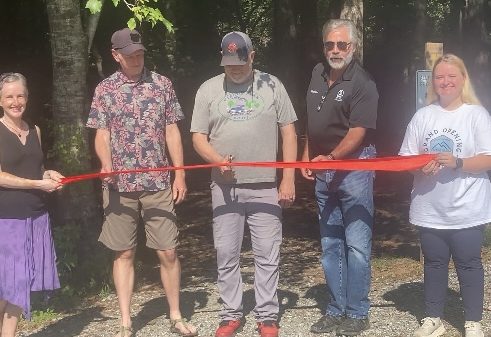Diet & Exercise: No bones to pick when it comes to calcium, weight training
Published 8:00 am Friday, July 6, 2018
Some folks think lifting weights or “resistance training” just strengthens, tones and tightens muscles, and while it does all these great things for us, there’s an added benefit — weight training strengthens bones.
That’s great news for everyone, especially the elderly. Each year, Americans experience 29 million falls, and, with 10,000 Americans turning 65 each day, it’s important to protect yourself.
Age-related changes, inactivity and inadequate nutrition gradually steal bone mass at a rate of 1 percent per year after age 40.
Let’s explore just what bone is.
Bone contains collagen, which is a protein that provides a soft framework, and calcium phosphate, a mineral that adds strength and hardness (more than 99 percent of the body’s calcium in found in its bones and teeth) to bones.
The two types of bone found in the body include cortical and trabecular.
Cortical bone is dense and compact, and forms the outer layer of bones. Trabecular bone makes up the inner layer of bones, and has a spongy, honeycomb-like structure.
Remember, bones are living tissue. They also contain nerves and red and yellow marrow.
Red bone marrow is where all new red blood cells, white blood cells and platelets are made. Yellow bone marrow contains some white blood cells, but its color is due mostly to having more fat cells.
Bones are constantly tearing down and rebuilding. An individual in their teens and 20s is forming more bone cells than they are losing, but, as we age, the process of building new bone slows, and bone density begins to decrease, particularly in women who approach menopause.
By the way, men’s bone growth slows as they age, too.
Osteopenia is a medical condition of reduced bone mass of lesser severity than osteoporosis. Osteoporosis is a condition in which bones actually become brittle from loss of tissue.
Osteoporosis is estimated to cause 1.5 million fractures in the United States in folks 50 years and older. To reduce falls, it’s important to strengthen muscles to maintain balance, and fortify and harden bones to resist fractures.
Weight bearing exercises like resistance training provides the mechanical stimuli or “loading” to maintain and improve bone health. Numerous studies show strength training does slow bone loss and rebuild bone density.
Here are a few weight training tips I recommend to clients and even to personal trainers I teach:
• Strength train two or three times a week, every week. Try to rest at least one day between sessions.
• Work with a qualified, certified personal trainer, especially one who is experienced.
• Concentrate on exercise form, not just the amount of weight you are lifting. Poor form can prompt injury and poor gains in strength to muscles as well as bones.
• Pay attention to your breathing. Don’t hold your breath while exercising. Exhale as you work against resistance (lifting, pushing or pulling), and inhale as you release.
• Don’t use other muscles to compensate when lifting weights. You should only be engaging the muscles you are using.
• Keep challenging muscles slowly by increasing resistance and repetitions (the number of times you lift a weight within a set). An exercise set is the number of cycles of repetitions you complete. Make certain your fitness program progresses.
• Consistency matters. Endurance and strength starts to fade if you skip too many workouts. In fact, consistency in exercising is even more important than effort when producing training results. Remember, slow and steady wins this race.
• Perform exercises using each muscle group. Ideally, begin training larger muscle groups and work your way to smaller ones. An example could be training legs, back, chest, shoulders, triceps, biceps and abdominals, in that order. Abdominal muscle should always be worked last.
Also, strengthening the hips and lower back is essential in preventing fractures and falls.
When strengthening the hips, I recommend performing exercises that include hip extension (increasing the angle between the thigh and the front of the pelvis), hip abduction (outward movement) and adduction (inward movement), and hip flexion (moving the leg or knee up towards the torso). These work the whole hip.
One easy exercise that works all of these is to sit in a chair, either holding a 5 pound dumb bell on top of each thigh, or weights strapped to ankles (ankle weights). Then, while still in a seated position, march in place, lifting the knees.
This really works the hip flexors that attach to both the back and the hips, which improves muscle and bone strength in both.
Lastly, since bone is made up of calcium, and because our bodies don’t produce calcium, it’s essential we get enough of this bone strengthening mineral every day. After age 51, folks need 1,200 mg of calcium per day, plus 800-1000iu of vitamin D.
The two most common forms of calcium supplements are calcium carbonate and calcium citrate. Both are readily absorbed, but should be taken differently.
To be absorbed properly, calcium carbonate should be taken with food, whereas calcium citrate should be taken on an empty stomach.
By the way, if you’re wondering about “coral” calcium, it’s calcium carbonate.
David Crocker, of Landrum, has been a master personal trainer and nutritionist for 30 years. Diet or exercise question? Email him at dwcrocker77@gmail.com or text 864-494-6215.





